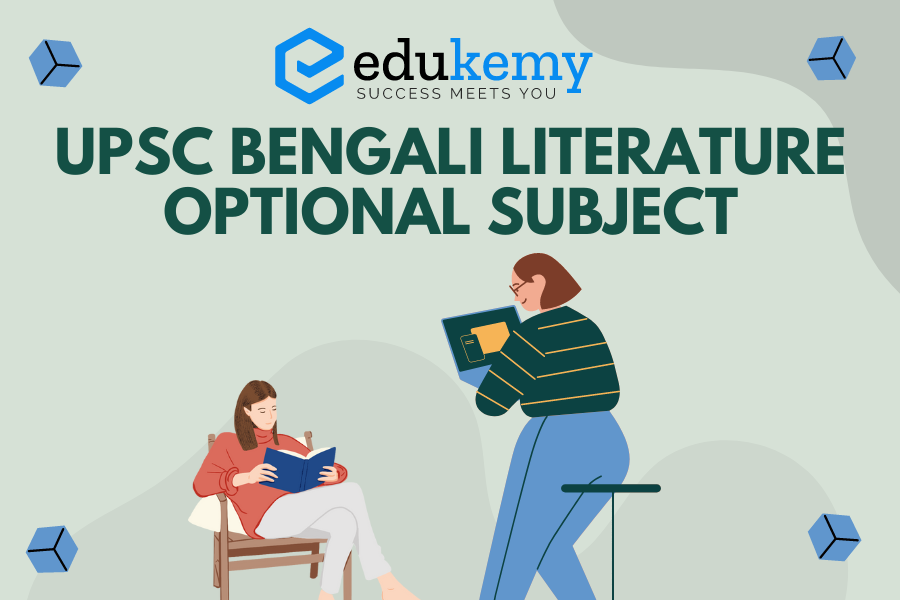
Embark on a captivating journey through the vibrant tapestry of Bengali literature! As an optional subject for the UPSC Civil Services Examination, Bengali literature offers a unique opportunity to delve into the rich cultural heritage of Bengal. Spanning centuries, this literary landscape boasts diverse genres, from ancient epics to contemporary poetry. By delving into the works of iconic authors and exploring the socio-cultural contexts that shaped them, you’ll gain a deeper understanding of Bengali society and its evolution. This exploration will not only enhance your analytical and essay writing skills but also equip you with a valuable perspective for your UPSC endeavors.
Contents
- 1 Bengali Paper 1
- 2 Bengali Paper 2
- 3 Frequently Asked Questions (FAQs)
- 3.1 1. What is the syllabus for the Bengali Literature Optional subject?
- 3.2 2. What is the exam pattern for Bengali Literature Optional?
- 3.3 3. What are the advantages of choosing Bengali Literature Optional?
- 3.4 4. Are there any disadvantages to opting for Bengali Literature Optional?
- 3.5 5. How can I prepare for the Bengali Literature Optional exam?
- 4 In case you still have your doubts, contact us on 9811333901.
Bengali Paper 1
Section – A
- The chronological track from Proto-Indo-European to Bangla (Family tree with branches and
approximate dates). - Historical stages of Bangla (Old, Middle, New) and their linguistic features.
- Dialects of Bangla and their distinguishing characteristics.
- Elements of Bangla Vocabulary.
- Forms of Bangla Literary Prose—Sadhu and Chalit.
- Processes of language change relevant for Bangla: Apinihiti (Anaptyxis), Abhishruti (umlaut), Murdhanyibhavan (centralization), Nasikyibhavan (Nasalization), Samibhavan (Assimilation), Sadrishya (Analogy), Svaragama (Vowel insertion) —Adi Svaragama, Madhya Svaragama or Svarabhakti, Antya Svaragama, Svarasangati (Vowel harmony), y—shruti and w—shruti.
- Problems of standardization and reform of alphabet and spelling, and those of transliteration and Romanization.
- Phonology, Morphology, and Syntax of Modern Bangla (Sounds of Modern Bangla, Conjuncts; word formations, compounds; basic sentence patterns.)
Section – B
- Periodization of Bangla Literature: Old Bangla and Middle Bangla.
- Points of difference between modern and pre-modern Bangla Literature.
- Roots and reasons behind the emergence of modernity in Bangla Literature.
- Evolution of various Middle Bangla forms; Mangal Kavyas, Vaishnava lyrics, Adapted narratives (Ramayana, Mahabharata, Bhagavata), and religious biographies.
- Secular forms in middle Bangla literature.
- Narrative and lyric trends in the nineteenth-century Bangla poetry.
- Development of prose.
- Bangla dramatic literature (nineteenth century, Tagore, Post-1944 Bangla drama).
- Tagore and post-Tagoreans.
- Fiction, major authors: Bankimchandra, Tagore, Saratchandra, Bibhutibhusan, Tarasankar, Manik ).
- Women and Bangla literature: creators and created.
Bengali Paper 2
Section – A
- Vaishnava Padavali (Calcutta University) Poems of Vidyapati, Chandidas, Jnanadas, Govindadas and Balaramdas.
- Chandimangal Kalketu episode by Mukunda (Sahitya Akademi).
- Chaitanya Charitamrita, Madhya Lila by Krishnadas Kaviraj (Sahitya Akademi).
- Meghnadbadh Kavya by Madhusudan Dutta.
- Kapalkundala by Bankimchandra Chatterjee.
- Samya and Bangadesher Krishak by Bankimchandra Chatterjee.
- Sonar Tari by Rabindranath Tagore.
- Chhinnapatravali by Rabindranath Tagore.
Section – B
- Raktakarabi by Rabindranath Tagore.
- Nabajatak by Rabindranath Tagore.
- Grihadaha by Saratchandra Chatterjee.
- Prabandha Samgraha, Vol. 1, by Pramatha Choudhuri.
- Aranyak by Bibhutibhusan Banerjee.
- Short stories by Manik Bandyopadhyay : Atashi Mami, Pragaitihasik, Holud-Pora, Sarisrip, Haraner Natjamai, Chhoto-Bokulpurer Jatri, Kustharogir Bou, Jakey Ghush Ditey Hoy.
- Shrestha Kavita by Jibanananda Das.
- Jagori by Satinath Bhaduri.
- Ebam Indrajit by Badal Sircar.
Frequently Asked Questions (FAQs)
1. What is the syllabus for the Bengali Literature Optional subject?
The UPSC syllabus for Bengali Literature covers a vast range, from ancient Bengali literature to contemporary works. It includes major authors, genres, literary movements, and critical analysis of the socio-cultural context and themes within Bengali literature. You can find the detailed syllabus on the UPSC website or through coaching institutes like PWOnlyIAS [UPSC Bengali Literature Optional Syllabus For Mains 2024].
2. What is the exam pattern for Bengali Literature Optional?
The Bengali Literature Optional subject consists of two papers, each carrying 250 marks. Each paper is divided into two sections with four questions each. You have to attempt five questions, with Question 1 and Question 5 being compulsory. The remaining three questions can be chosen from the remaining six, ensuring at least one from each section. Importantly, answers must be written in Bengali only.
3. What are the advantages of choosing Bengali Literature Optional?
Choosing Bengali Literature offers several advantages. If you’re comfortable with the language, it can be a scoring subject. It allows for a deep understanding of Bengali culture and heritage, enriching your knowledge base. Additionally, the vast literary tradition provides a wide range of topics to study and write about.
4. Are there any disadvantages to opting for Bengali Literature Optional?
While advantageous for some, Bengali Literature might not be suitable for everyone. It requires strong proficiency in Bengali to comprehend the language and write effectively. The vast syllabus demands dedicated study time and may be challenging for those unfamiliar with Bengali literature.
5. How can I prepare for the Bengali Literature Optional exam?
There are various resources available to prepare for the exam. Referring to past years’ question papers helps understand the question format and expected answers. Textbooks and study materials from reputed publications can guide your learning. Additionally, enrolling in coaching classes or seeking guidance from Bengali literature experts can provide valuable insights and strategies.
In case you still have your doubts, contact us on 9811333901.
For UPSC Prelims Resources, Click here
For Daily Updates and Study Material:
Join our Telegram Channel – Edukemy for IAS
- 1. Learn through Videos – here
- 2. Be Exam Ready by Practicing Daily MCQs – here
- 3. Daily Newsletter – Get all your Current Affairs Covered – here
- 4. Mains Answer Writing Practice – here

